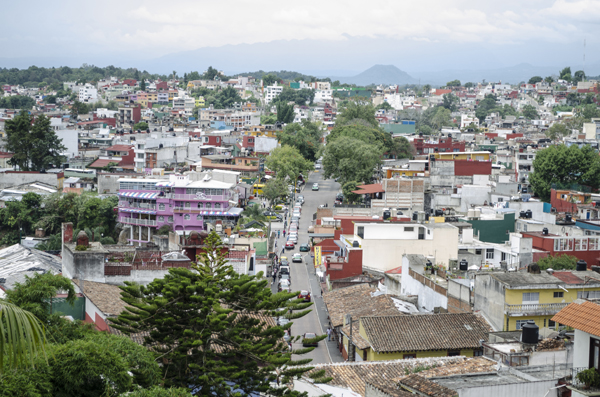
Obtaining a residency visa in Mexico is not always easy, but our Guide to Residency in Mexico gives newcomers an overview of the steps involved and advice from others who have already navigated the process.
- Gather the necessary documents for residency status in Mexico. These include:
- Valid passport
- Proof of financial solvency
- Proof of address in Mexico
- Proof of health insurance
- Visit the National Immigration Institute (INM) to apply for residency status. You will need to fill out the application form and provide the necessary documents.
- Pay the applicable fees for the residency application.
- Wait for the INM to process your application. This can take up to two months.
- Once your application is approved, you will receive a temporary residency card.
- Apply for a Tax Number (RFC) at the Tax Administration Service (SAT).
- Visit the SAT website and fill out the application form.
- Provide the necessary documents, such as your passport and temporary residency card.
- Wait for the SAT to process your application. This can take up to two weeks.
- Once your application is approved, you will receive your Tax Number.
- Visit the INM to obtain your permanent residency card. You will need to provide your Tax Number and pay the applicable fees.
What tips do expats have about residency and visas in Mexico?
“To bring your car in and spend more than 180 days you need an FM3 visa. No, it is very easy and the process can be started with the Mexican consulates up north,” said one expat living in Manzanillo.
“We used our recommended attorney, which was a great move. We applied at the Mexican consulate in Seattle which took four hours … We brought proof of income, passports and that was it. Our attorney had suggested that we apply for one permanent (for me) and one temporary visa for my wife… This allowed us to bring the car down under her name. It also sped the shipment of household goods using her temp visa. The cost of the attorney (minimal) was well worth the price.. He had the local connections that moved the paper along. When we arrived in Ajijic we immediately started the local paperwork for our visas. After being finger printed and filling out a couple of forms, we had our visas in 10 days,” wrote a member in Ajijic.
“Proof of how to support myself, apostilles of marriage and birth certificate and yearly tax report in the country I retired to. The < a href="https://www.uscis.gov/about-us/find-uscis-office/international-offices/mexico-uscis-mexico-city-field-office">Immigration Department in Mexico had a lawyer who advised me as to documents I needed for the process,” commented one expat who made the move to Apizaco.
“It’s possible to live here on perpetual 6-month tourists visas that are given upon arrival,” remarked one expat living in Lake Chapala.
“When we moved here, we needed to get an FM3 visa, now known as Residente Temporal. It was very easy to get in 2008, but more difficult now. I think the financial requirements are more than is necessary, and we would not qualify if we were starting now,” wrote one member in Mazatlan.
“Here it is: Lived in northern Virginia about 5 mins from Washington, DC, so I was able to use the office downtown DC near Georgetown. My appointment/process took about 15-20 mins before they smiled at me and said that I was going to live in Mexico. I submitted the required payroll statements, which showed them being directly deposited into my bank account. I was still working (I think this might have been an advantage…not sure) These statements listed my 401K, as well. I did not point that out to them and they didn’t ask. I didn’t need to use my pension info, nor did I bring it with me. I didn’t apply for Social Security until 6 months after arrival, so it was not used as income. They didn’t ask for bank statements and I didn’t volunteer. In addition, there was no need in Puerto Vallarta for me to submit financials again… I only listed what my current sources of income were. Keep in mind that this was over 5 years ago and I did it all myself. I just took the time to read and digest online what I needed to do, period,” remarked one expat who made the move to Puerto Vallarta.
“You should put getting an appointment at a Mexican Consulate to apply for a visa at the top of your research list. You need to find out if you can legally move and live in Mexico before — or while— you research on where. There is a ton of information on the topic on YouTube and through a simple Google search. 1. Which Mexican Consulate you choose within your home country. Some require that you apply in the area where you live; some don’t. 2. Do you have all of the required documents when you go to your appointment? 3. Do you qualify for a “retirement visa?”4, Are you able to travel to Mexico to complete the process AFTER you receive your visa? I suggest you turn to YouTube where there are multiple videos made by people that have already completed the visa process. The videos have tips and hints to guide you through the process,” explained one expat living in Mexico.
“Residente Permanente Visa: I didn’t have to call them, I had gotten approved on a Thursday and they just told me to come back on Tuesday afternoon to pick up my passport with the visa stamp. All in all I was able to complete the entire process from initial application to getting the visa in 2 weeks with a bit of time to spare, might have been faster if I had been totally prepared. Bring color passport photos and pay attention to any Mexican government holidays that may fall around the time of your application and what day theyes have off to celebrate. For instance today is “Cinco de mayo” But yesterday (Friday) the many government offices were closed, (At least around here in the Yucatán, seems like it varies a bit state to state). [If you are married] You can apply together and if your total combined assets/income meet the criteria you will both recieve your permanent visas at the same time,” said one expat in Merida.
“This should be addressed at the immigration office here in Playa. Many come in on a Tourist Visa that is generally given for 180 days. After that, the person has to leave the country and return to hopefully get another Tourist Visa. However, their requirements for getting a Temporary or Permanent Visa are online and are affordable,” commented one expat living in Playa del Carmen, Mexico.
“Live here with a temp visa FMM you get at the border when you cross, show your passport and cost is about $25. If you purchase property, same thing. Many people that rent, don’t bother with getting a resident card, they stay under the radar. The foreigners like me, that work, must have one, either it’s temp or perm resident card. In the old days you may have heard them called FM3 and FM2’s,” mentioned one expat living in Mexico.
“This is still a bit of a nightmare. You must apply for your residence from your home country and then there will be a few appointment with immigration. It took us 5 months to get our temp residency and we have to be in Mexico 30 days prior to our 1 year expiration date to renew. Keep you posted on that. At one point we were temp residents but gave it up as we were never in the country longer than 6 months at a time. We travel a lot. But the Mexican govt really wants you to have your residency,” said an expat in Mexico.
“Foreigners are allowed 180 in Mexico. This is decent amount of time and so most snow birds do not have their residencies. But, it is advisable if you plan on buying or spending much time in Mexico. The residency requirements have just changed this past year. You now start the process in your home country at the Mexican consulate. From there you will have to continue this process in Mexico. If you are not a retiree, you can only get your temporary residency, for one year. Then you have to go through the process to renew. If you are a retiree then you can go for your permanent residency, and this is a one time thing,” remarked one expat in Mexico.
“The main thing to know is that you must start your residency request outside of Mexico, at a Mexican consulate. Then you have 30 days to present yourself to the Mexico immigrations. There are professional groups that will do all of this for you, for a fee, of course,” said one expat living in Mexico.
“It has been over 3 years since we went through the process at the Seattle Consulate. They were very specific and they looked at our investment income with social security AND our savings accounts. We provided 2 years of statements downloaded from the brokerage house as well as deposits into our accounts from income. We knew that we would qualify for PR status so it was a breeze. There was no mention about notarization of downloaded documents but we were well organized and made it easier for them. I am unsure about future income from work since we were both retired, but I would think it will be more difficult to convince them that you will have ongoing income from work unless you provide a letter from HR or some other source that shows that you will continue to have income while residing in MX. The best method is to go fully prepared to show your financial qualifications absolutely meet or exceed their requirements,” commented one expat who moved to Mexico.
“The process of applying for a visa in Mexico depends on the type of visa you require. Generally speaking, you will need to submit a visa application form, photographs, your passport, a valid return ticket, and the required visa fee to the Mexican consulate. Additionally, depending on the type of visa you are applying for, you may have to provide additional documentation such as a proof of address, a medical certificate, documentation of sufficient funds, employment records, and proof of relationship to a Mexican citizen. The process of applying for Mexico residency is slightly more involved and documented evidence will often be required from you. In most cases, an application will be required that contains your personal information, orientation for the request, and a copy of your passport. Additionally, you will need to submit evidence of sufficient financial resources, proof of accommodation in Mexico, a medical certificate, a criminal background check, and proof that you have been a resident of Mexico for at least two years. After submitting the application and the required documentation, you will be called for an interview and your documents will be verified. Finally, after being approved, you can collect your residency card,” said one expat.


